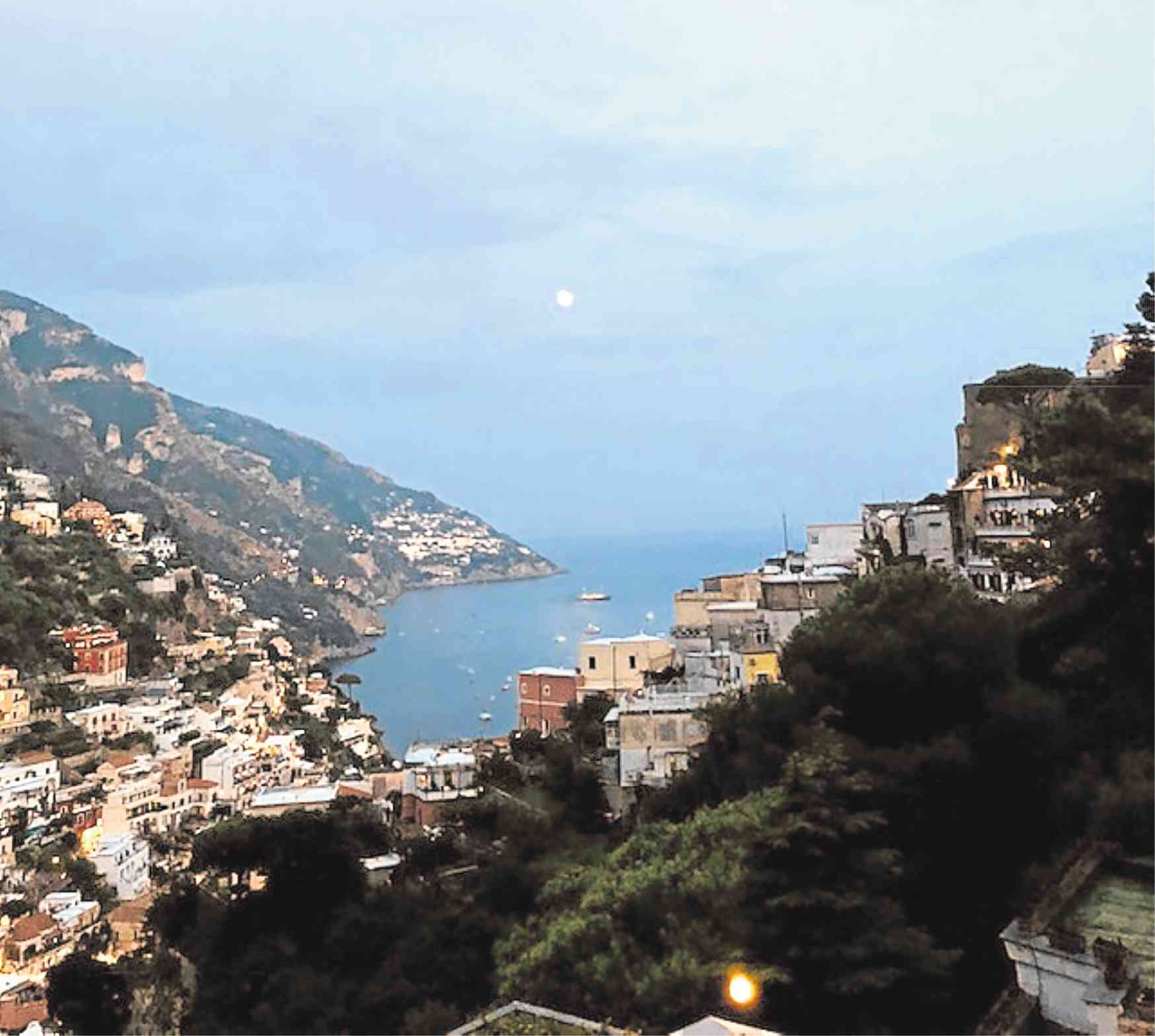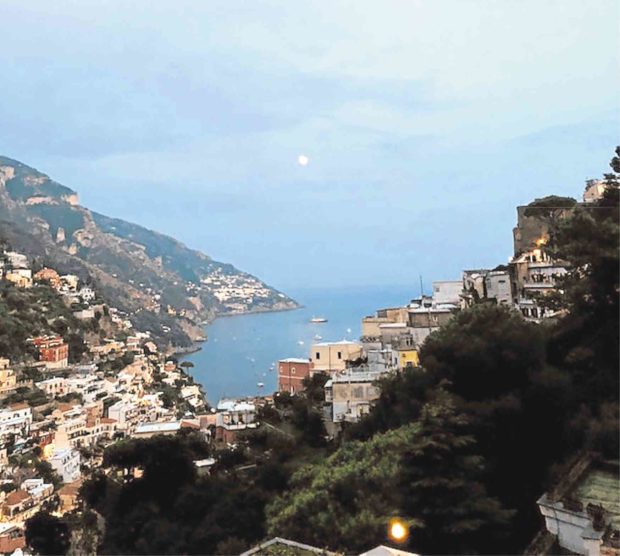
For the first-time traveler to Italy, I would encourage a visit to Rome and the Vatican, Venice, Florence and Milan. All these places have much to offer—whether you’re a history buff, an art enthusiast, a discriminating shopper or a foodie.
But for those who also want to experience nature, I highly recommend the Amalfi Coast, a stretch of coastal towns with colorful homes, villas and castles carved on the cliffside, with breathtaking views of blue waters and small fishing villages, private beaches and lemon groves. It’s a popular holiday destination of European royalty and affluent families.
For our daughter Stephanie’s graduation gift, we took a three-week trip to Italy and Portugal, the highlight of which was the Amalfi Coast.
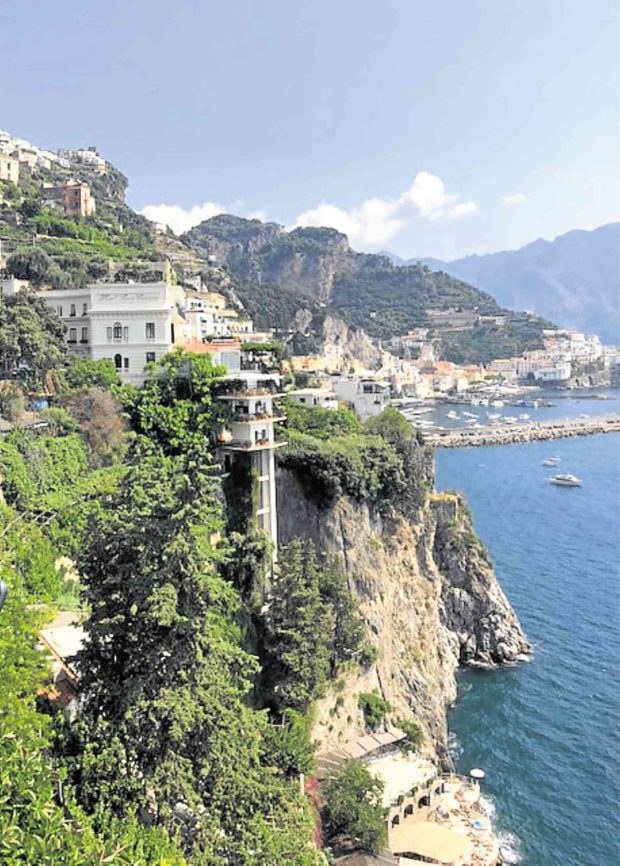
Soil, sea and sun
The Amalfi Coast is in southern Italy in the region of Campagna, known for its buffalo mozzarella, unique wine selections grown in vineyards with volcanic soil, and lemon groves growing on the cliffside sprayed by sea foam. The combination of soil, sea and sun makes the place’s produce special and unique to the area.
From Naples, we reserved a car for the whole day and our English-speaking, handsome Italian chauffeur, Marco, picked us up and served as our guide.
We started with a quick tour of the ruins of Pompeii, followed by lunch and wine tasting at the Bosco de’ Medici Winery. With grapes and vines protecting us from the sun, we enjoyed our al fresco meal of bruschetta, caprese salad, beef cooked under the ashes, and gnocchi, with ricotta cheesecake for dessert.
Although sleepy after lunch, we were wide awake upon reaching the Amalfi Coast and its amazing views. We stopped along the way to take pictures.
My traveling companions are both photography buffs— my husband Jun loves to take pictures of buildings and nature, while Steph, being a true millennial, knows exactly which spots and poses were best.
Although most travelers stop first in Sorrento, we bypassed it precisely for this reason. Instead, we chose to stay in Positano, a quaint resort town, formerly a fishing village.
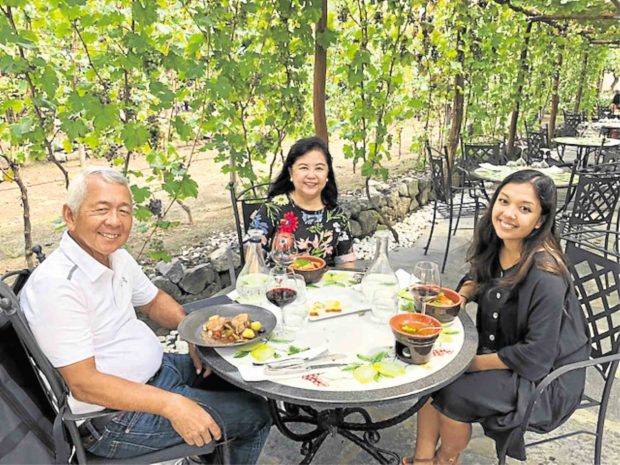
1,000 steps
To reach town from the top of Positano, you need to go down 1,000 steps to the main street, with another kilometer walk to the town center. We stayed at the Hotel Royal Positano, which was halfway down, so it took us only 400 steps to get to the main street.
My physically fit husband and daughter excitedly took the stairs both ways, while I resourcefully found a bus that would drop me off in front of the hotel.
Valuable advice: Wear comfortable shoes like sneakers or orthopedic sandals. I wore my fashionable platform sneakers but, after tripping and almost falling on the cobblestone streets, I bought a pair of sensible shoes which I used the rest of the time.
The town is a delight, its single pedestrian road going down to the beach. On both sides are small high-end fashion boutiques and many places to enjoy a chilled glass of limoncello, gelato (my favorite was pistachio, Jun’s was dark chocolate and Steph’s was stracciatella) and tasty Italian meals.
We had lunch at Buca di Bacco, a typical Italian restaurant by the water, where we ate our favorite spaghetti vongole (with clams) and caprese salad, and of course, some wine.

Positano fashion is known for quality design and cotton/linen fabrics perfect for the weather, so it was a treat to enter the boutiques.
This is also the place where you can order handmade shoes while you wait, and ceramic souvenirs. We chose Ceramiche Casola, owned and run by four generations of the Casola family, after being briefed on how the ceramic is cut from the almost unbreakable clay made with volcanic ash, and individually hand-painted by artisans.
The colors are vivid—the blues of the sea and the sky, the greens of the lush cliffs and the yellows of the lemon groves—especially after the ceramic is glazed and fired in the oven.
We stopped by small art museums and shops and the Church of Santa Maria Assunta with the Black Madonna.
On both nights, we passed up on the full dinner and enjoyed our wine with focaccia bread, prosciutto, salami and cheeses in our hotel terrace, overlooking beautiful Positano town dotted with lights, with the almost full moon overhead, and serenaded by an Italian crooner. The experience was magical!
After two days, Marco our driver (who felt so at home with us, he asked if he could visit us in Manila) came back to continue our drive along the Amalfi Coast.
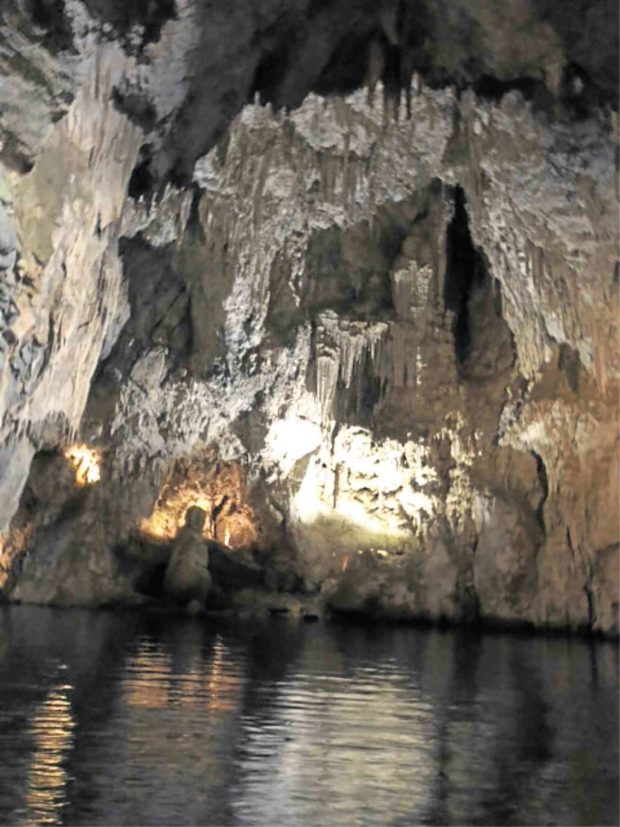
Grotto
First stop was the Grotto dello Smeraldo, where we took a brief boat tour of the underground river to enjoy the stalactite and stalagmite formations—an alternative to Capri, which was packed with tourists.
The grotto was very blue with refreshingly cool temperature. The only thing missing was our boatman’s rendition of “O Sole Mio.”
We passed by the town of Amalfi, a Unesco World Heritage Site, and Vietri, the ceramic center. We then proceeded up to Ravello, passing by Scala, the oldest town in the Coast.
Ravello, a favorite place of artists and musicians, was another highlight of our Amalfi Coast tour.
Story goes that German composer Richard Wagner was working on his opera, “Parsifal,” for two decades and could not seem to finish the piece, until he stayed in Ravello where he was inspired to work on the last act just three years before he died.
Every year, the Ravello Summer Music Festival is organized in honor of Wagner with piano concerts and a grand orchestra performing on a stage jutting out. It overlooks the Mediterranean Sea and the rugged Amalfi Coast.
Other artists who spent time there working on their masterpieces included Joan Miro, Truman Capote, Tennessee Williams, Graham Greene and Leonard Bernstein. I must admit that, for a brief moment, I felt like I could put down on paper this novel I had been planning in my mind, or take a canvas and paint the scenery. I could also see my husband finishing his memoirs, or Stephanie writing the lyrics and notes of a song. Maybe a longer stay next year?
We went around Piazza Vescovado with the Cathedral at the center (another church and opportunity to make a wish) and with many cafés around the plaza.
A tour of Villa Rufolo’s moor-inspired castle and beautiful gardens was an opportunity to enjoy the view below and take wonderful photos, imagining what it was like for the Rufolo family to spend their summer vacations in this property that had more rooms than number of days in a year.
Two more destinations in Ravello are palaces that have been converted to deluxe five-star hotels—Villa Cimbrone, with its impressive garden, and Palazzo Avino.
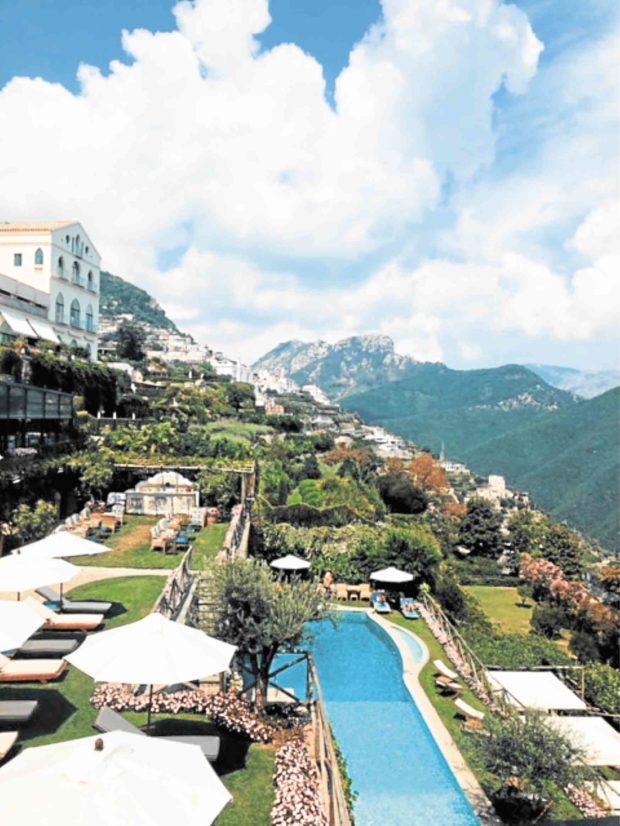
Villa Cimbrone inspired Gore Vidal so much that he called it the “most beautiful place he had ever seen, where sea and sky meet…”
Our lunch at Michelin-star Rossellini’s Restaurant in Palazzo Avino’s terrace, with breathtaking views, was a feast of dishes made from the freshest catch and ingredients like oysters, lobsters, mozzarella and tomatoes, and spaghetti with clams, paired with regional wines.
Even the extra-virgin olive oil used for dipping breads tasted special. The relaxed atmosphere lent itself to savoring every bite of our meal.
We left the Amalfi Coast with a heavy heart but filled with wonderful memories, and grateful to my dear friends—Gianna Montinola, Winnie Go and Candy Lehmann—who generously shared their recommendations and insights, which allowed Jun, Stephanie and myself to have the best Italian vacation ever. —CONTRIBUTED

